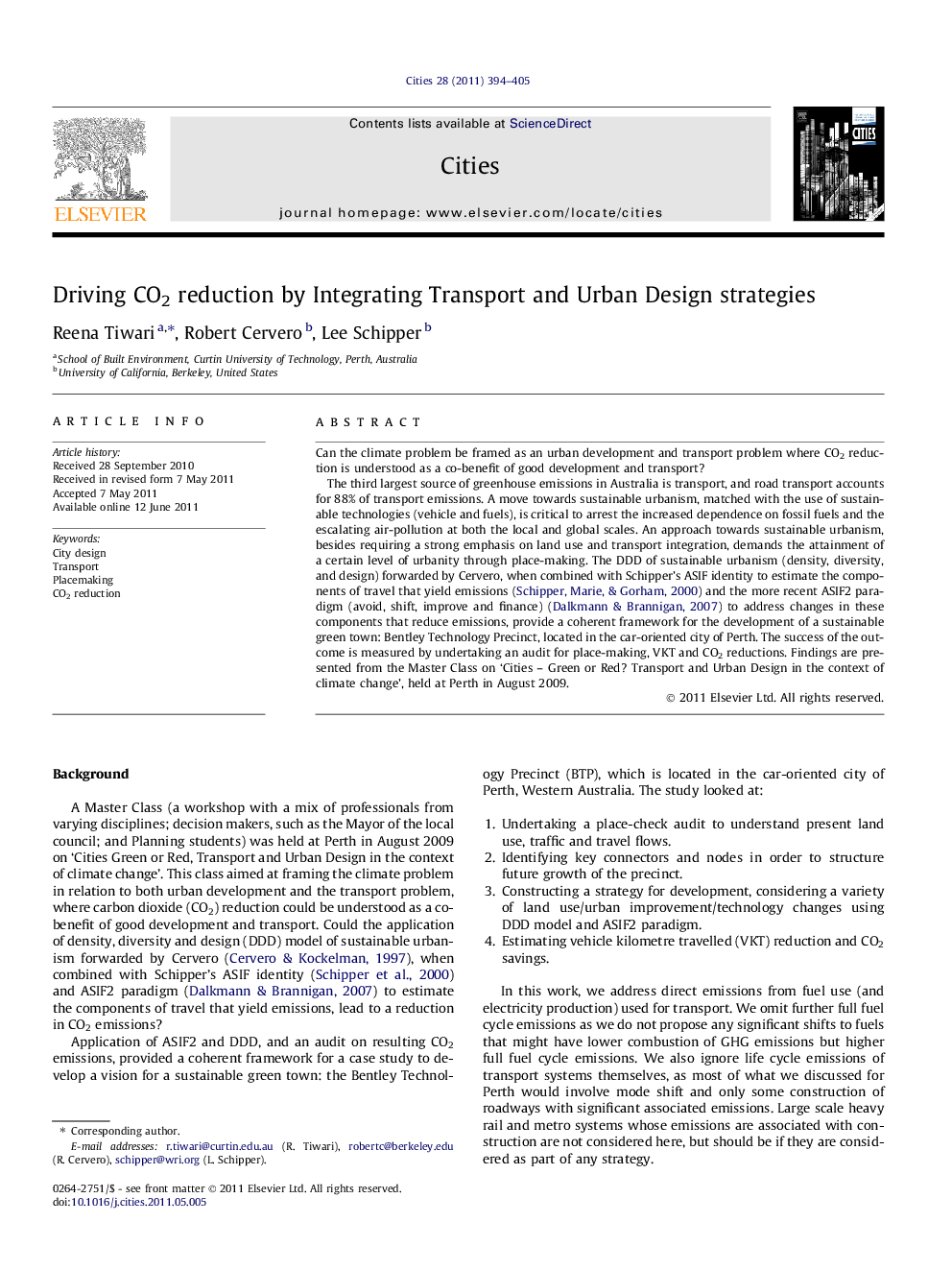| Article ID | Journal | Published Year | Pages | File Type |
|---|---|---|---|---|
| 1008687 | Cities | 2011 | 12 Pages |
Can the climate problem be framed as an urban development and transport problem where CO2 reduction is understood as a co-benefit of good development and transport?The third largest source of greenhouse emissions in Australia is transport, and road transport accounts for 88% of transport emissions. A move towards sustainable urbanism, matched with the use of sustainable technologies (vehicle and fuels), is critical to arrest the increased dependence on fossil fuels and the escalating air-pollution at both the local and global scales. An approach towards sustainable urbanism, besides requiring a strong emphasis on land use and transport integration, demands the attainment of a certain level of urbanity through place-making. The DDD of sustainable urbanism (density, diversity, and design) forwarded by Cervero, when combined with Schipper’s ASIF identity to estimate the components of travel that yield emissions (Schipper, Marie,& Gorham, 2000) and the more recent ASIF2 paradigm (avoid, shift, improve and finance) (Dalkmann & Brannigan, 2007) to address changes in these components that reduce emissions, provide a coherent framework for the development of a sustainable green town: Bentley Technology Precinct, located in the car-oriented city of Perth. The success of the outcome is measured by undertaking an audit for place-making, VKT and CO2 reductions. Findings are presented from the Master Class on ‘Cities – Green or Red? Transport and Urban Design in the context of climate change’, held at Perth in August 2009.
► 3Ds of sustainable urbanism (Density, Diversity and Design) & ASIF (Avoid, Shift, Improve and Finance) paradigm are explored. ► A resulting coherent framework for the development of a sustainable green town is generated. ► Sustainable urban development requires land use, transport integration, and certain levels of urbanity through place-making. ► The authors question whether CO2 reduction can be understood as a co-benefit of good development and transport.
